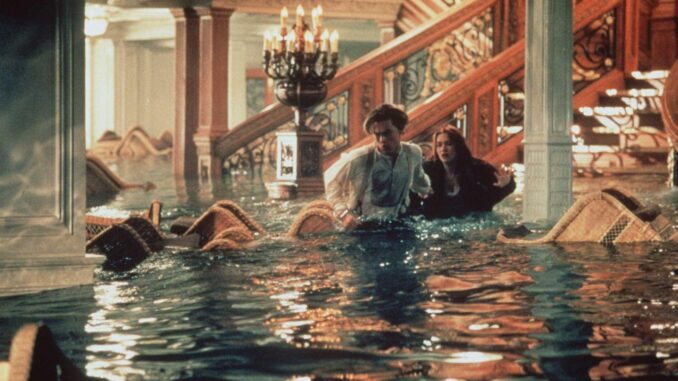
The icy maw of the North Atlantic, a canvas of black despair, has for decades etched an indelible image into the global consciousness: Leonardo DiCaprio’s Jack Dawson, his face pale and frozen, his hand slipping from Kate Winslet’s Rose DeWitt Bukater, descending into the abyss. It is the ultimate cinematic sacrifice, the heart-wrenching climax of Titanic, and the source of a debate that has raged hotter than any fictional boiler room fire: couldn’t Jack have just fit on that door? For a quarter-century, director James Cameron stood firm, defending his artistic choice with the unwavering conviction of a captain going down with his ship. And then, the admission: James Cameron, the architect of this enduring tragedy, recently conceded that, yes, Jack might have survived. This revelation, born from a scientific experiment for a National Geographic special, is more than just a posthumous plot correction; it’s a fascinating illustration of the enduring power of narrative, the interplay between audience interpretation and authorial intent, and the essential, sometimes brutal, logic of storytelling.
From the moment the credits rolled on Titanic in 1997, the discourse began. Fans, reeling from Jack's demise, meticulously dissected the scene. Memes proliferated showing two people comfortably splayed on a door, a sofa, even a refrigerator. The "door theory" became a cultural touchstone, a collective frustration born from the desire for a happy ending that was brutally denied. Cameron, throughout this enduring debate, maintained that Jack’s death was a narrative imperative. It wasn't about physics, he argued, but about storytelling. Jack had to die, not just because the door couldn't support two people (which he firmly believed at the time), but because his death was the crucible in which Rose’s transformation was forged, the ultimate testament to their star-crossed love, and the final, devastating flourish on the grand canvas of the disaster. His survival, he reasoned, would have diminished the film's tragic power, turning an epic into a mere romantic adventure.
Cameron’s recent “admission” didn’t arise from a sudden epiphany or a concession to internet memes. Instead, it was the result of a scientific study for the National Geographic special "Titanic: 25 Years Later with James Cameron." Driven by the persistent fan theories, Cameron commissioned a full forensic analysis, complete with hypothermia experts and stunt doubles. The experiment meticulously recreated the conditions, testing various scenarios on a replica of the famous piece of debris. The conclusion? In certain specific conditions – if they had both climbed fully onto the door, orienting their bodies to maximize buoyancy and minimize exposure to the frigid water, and possibly with some additional insulation – there was a statistical possibility that both Jack and Rose could have survived long enough for rescue.
This technical vindication of the fan theory, however, doesn't rewrite the emotional reality of the film. Cameron himself qualified the findings, stating, “Jack might’ve lived, but there’s a lot of variables. I think his best option was to put his upper body on it, and Rose’s whole body was on it. But they were both in a hypothermic state, so it wasn't the ideal situation.” The key here is the distinction between scientific possibility and narrative necessity. A story, particularly one as grand and emotionally resonant as Titanic, operates on its own set of rules. The cinematic truth of Jack’s death, the stark, unforgiving reality presented on screen, remains unchanged. Cameron's admission is less about admitting a "mistake" and more about acknowledging a scientific "what if" that exists outside the fixed universe of the film he created.
Ultimately, Jack had to die, not because of the physical limitations of a wooden panel, but because his demise served a higher artistic purpose. His sacrifice elevated Rose from a stifled debutante to a woman liberated by love and loss, living a full life in his memory. Had he survived, their reunion might have been sweet, but it would have tethered their extraordinary love story to the mundane realities of life – mortgages, arguments, the slow erosion of time. Jack’s death immortalized their love, freezing it in the amber of tragedy, making it eternally pure and unblemished by the complexities of a continued existence. The film’s cathartic power springs directly from that ultimate sacrifice, a love so profound it transcends death.
James Cameron’s long-awaited "admission" is a fascinating footnote to a cinematic legend. It validates the persistent curiosity of an engaged audience and showcases the director's own dedication to scientific accuracy, even when applied retrospectively to a fictional scenario. Yet, it does not diminish the profound impact of Jack’s death. The image of his hand slipping, Rose’s tear-streaked face, and the haunting strains of the score will forever remain the true ending of Titanic. For while science may prove that Jack could have survived, the heart knows that, for the story to truly soar, he had to die, cementing his place not just as a lost love, but as an eternal symbol of sacrifice and enduring devotion.
